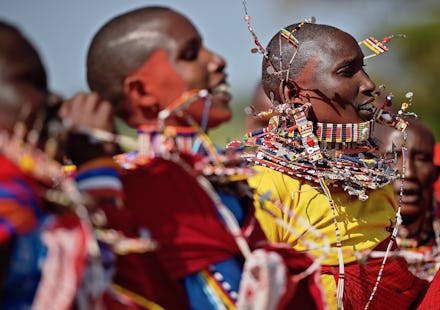These Amazing Maps Show the True Diversity of Africa

Africa is not a country. It's an entire continent filled with an amazing, unparalleled diversity of languages, peoples and nations, some of the latter among the most heavily urbanized places on the entire planet.
These maps from Harvard's AfricaMap project illustrate just how diverse the African continent really is, including its thousands of languages and ethnic groups, incredible biodiversity and the locations of its most urbanized areas.
There are an estimated 1,000 to 2,000 languages spoken across Africa, mainly falling into the Afro-Asiatic, Khoisan, Niger-Congo and Nilo-Saharan language families. The map below shows 50 of the most commonly spoken, ranging from Bantu to Songha, according to Marc Felix and Charles Meurs' 2001 book Peoples' Atlas of Africa:
African countries are also quite diverse from an ethnic standpoint. As the Washington Post's Max Fisher noted back in 2013, the world's 20 most ethnically diverse countries are all African, partially because European colonial powers divvied up sections of the continent with little regard for how the residents would have organized the land themselves. This map shows Africa's ethnographic regions as identified by George Murdock in his 1959 ethnography of the continent:
Far from the rural backwaters they're often stereotyped as, many African countries are highly developed, and others are rapidly urbanizing. The McKinsey Global Institute estimates that by the year 2030, the 18 largest cities in Africa will have a combined annual purchasing power of $1.3 trillion. By 2016, over half a billion Africans will live in cities, with 65 individual metros having a population of one million or more. Europe has just 36.
The largest is Lagos in Nigeria with a population of over 8 million (some estimates of the full metro area range up to over 20 million), followed by Cairo, Egypt (7.75 million), Kinshasha, DR Congo (6.3 million), Alexandria, Egypt (3.8 million).
The below chart lists African cities with a population of 1,000 or more:
The rich variety of ecosystems in Africa make it one of the most biodiverse regions around. The Encyclopedia of Earth notes that one quarter of the world's mammal species, one fifth of its birds and at least 950 amphibian species are present on the continent. One sixth of all plant species — about 35,000 species — are endemic to the African continent. Africa also has over 2,000 known species of fish, "thought to be the highest species richness in the world," according to the Encyclopedia of Earth. Southern Africa alone has recorded 100,000 insect and arachnid species in 580 families, one third of them in Namibia.